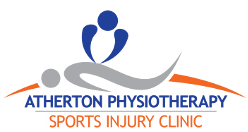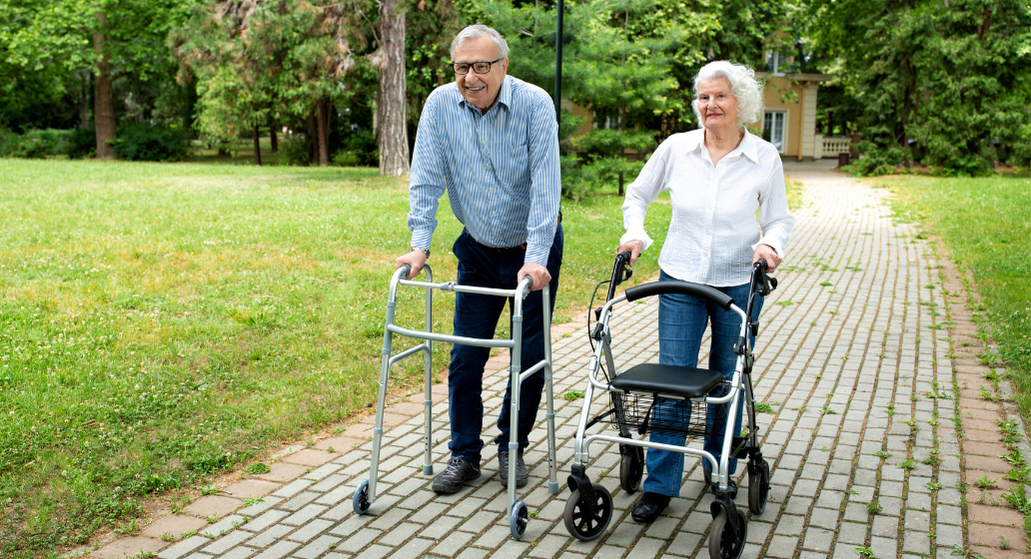In this blog we answer the questions you may ask yourself about mobility aids.
Q. Do I need a walking aid?
Walking aids will help your balance and/or take some pressure (body weight) off your legs. They can help you walk if you have injured your leg or if you have other medical conditions that cause you to have pain in your legs which are more obvious when you walk. For example, it is quite common for people with arthritis in their hip or knee to use a walking aid.
Q. If I have left hospital with a walking aid, when do I stop using it?
Once you are stronger in your legs you may be able to stop using your walking aid. However, sometimes you may need to use a different type of walking aid than the one you went home with. For example, you were discharged with a wheeled zimmer frame and you may be able to have less support now and elbow crutches may be a better option.
Q. What walking aid do I need?
Some walking aids give more support and stability than others. A walking stick gives the least support, whereas a gutter wheeled zimmer frame gives the most. Some walking aids are designed to be used inside (such as a wheeled zimmer frame) and others, outside (such as a rollator).
Our physiotherapist and Sports Rehabilitators can help you choose what is the best option for you.
Q. How do I make the walking aid the right height for me?
A usual ‘rule of thumb’ is that you should have, approximately, a 30 degree bend in your elbow(s) when your hand(s) is on the walking aid as you are standing.
Our Physiotherapist and Sports Rehabilitators can ensure that the walking aid is adjusted to the correct height for you.
Q. What types of waling aids are there?
1. Walking sticks
These can be made of metal or wood. They can be foldable or not. Different ‘ends’ can be applied to the bottom to increase their stability.
2. Elbow Crutches
People can opt to use 1 of these rather than a walking stick as they offer a little more support. More commonly, two are used and typically after leg surgery. However, using 2 of these rather than a walking stick may help you more if your knee or hip osteoarthritis is very painful.
3. Zimmer frames
These can have different ends on them. They can have rubber ‘ferrules’ or wheels (usually at the front only) or ski’s (commonly applied at the back).
4. Gutter frames
These are less commonly used but are helpful if you need to reduce leg pressure more or you have problems with your wrists.You can also get gutter crutches.
5. Rollators
These are used for outside walking as their wheels are designed for this. If you can only walk short distances, we would advise a 4 wheeled rollator with a seat. Otherwise a 3 wheeled rollator will give support.
Our Physiotherapists and Sports Rehabilitators can help you decide which is the best model.
6. Walking aid accessories
Walking sticks can have different rubbers on the end.
Ferrules
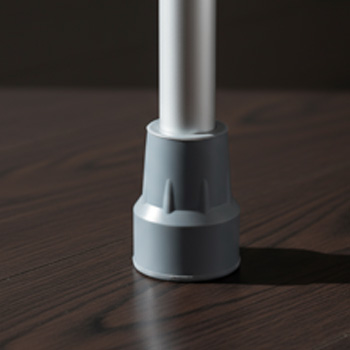
Self standing tips
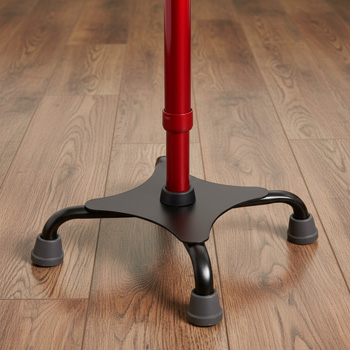
Also a cane holder or cane straps can help stop walking sticks from falling over when not in use.
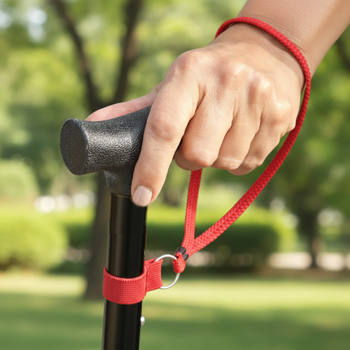
Zimmer frames can come with wheels at the front.
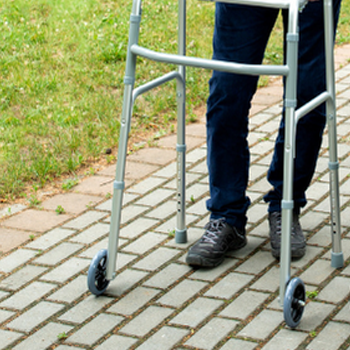
At the back they can have ‘ferrules’ which can have ‘gliders’ fitted or ‘ski’s’ can be fitted – usually to the back. Both ‘skis’ and ‘gliders’ can be useful to reduce ‘drag’ on either linoleum or carpeted surfaces.
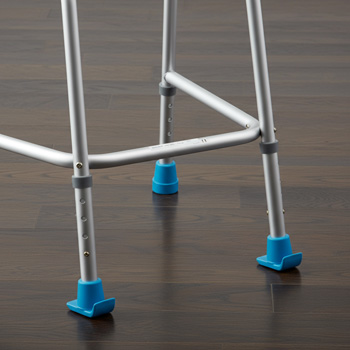
Buckingham caddies are a very useful accessory for wheeled zimmer frames. These enable the user to transport small items and drinks from ‘A to B’.
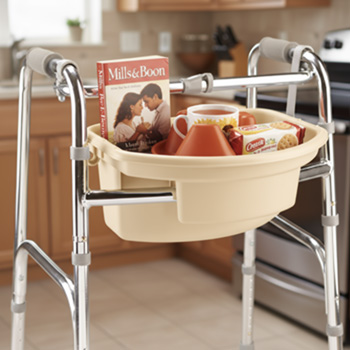
Hooks and shopping bag clips are useful for carrying bigger items. These can be used with zimmer frames.
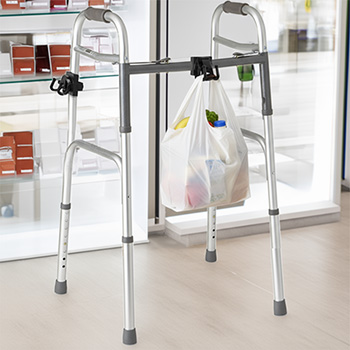
Q. How will I know if I have got the right walking aid?
This is a tough question to answer in a blog. It is wise to seek our help as we are trained to assess you.
Physiotherapists get specifically trained for this purpose.
